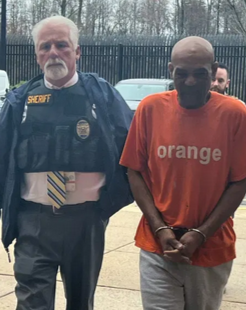
M-Vac™ Gets Double Nod from the Forensic Industry
The M-Vac™ recently got a double nod from the forensic industry, with a press release coming from DNA Labs International (DLI) about how the M-Vac™ helped them make a connection between two cold cases, which then helped the police to find and arrest a suspect. Then Forensicmag.com picked up on the story and ran an article about it in their on-line magazine as well.
The first case involved the murder of Jacqueline Lard in November of 1986. She was abducted from her place of business in Stafford, Virginia, then killed. Her body was found in a neighboring county the next day. Detectives carefully gathered evidence, but the case went cold.
The second case happened three years later, in March of 1989, also in Virginia, when 18-year-old Amy Baker called her parents to say she was driving home, but she never made it. She apparently ran out of gas and was walking to get more when she was accosted. Her family searched near the abandoned car and found her body two days later. Again, evidence was carefully gathered, which allowed it to be tested for DNA many years later.  In 2020, the cold case detectives from Fairfax County decided to submit evidence from the Baker case to DLI for analysis. They used the M-Vac™ to obtain a sample from the evidence which allowed a profile to be uploaded to the Virginia database. This is when the connection was made between the two cases. Later, investigative forensic genetic genealogy was used on the sample to find Elroy Harrison of Stafford County, Virginia, who was arrested in March of 2024 on charges related to the Jacqueline Lard case. Further charges in relation to the Amy Baker case are expected.
In 2020, the cold case detectives from Fairfax County decided to submit evidence from the Baker case to DLI for analysis. They used the M-Vac™ to obtain a sample from the evidence which allowed a profile to be uploaded to the Virginia database. This is when the connection was made between the two cases. Later, investigative forensic genetic genealogy was used on the sample to find Elroy Harrison of Stafford County, Virginia, who was arrested in March of 2024 on charges related to the Jacqueline Lard case. Further charges in relation to the Amy Baker case are expected.
In their press release, DLI says, "The M-Vac™ System is being utilized by an increasing number of police agencies and crime labs both in the United States and internationally. As investigators are assigned difficult cases, having a tool like the M-Vac™, immediately available helps immensely. It can collect critical DNA evidence from a variety of surfaces at the crime scene, in the evidence processing facility or in the crime lab."
Sources: